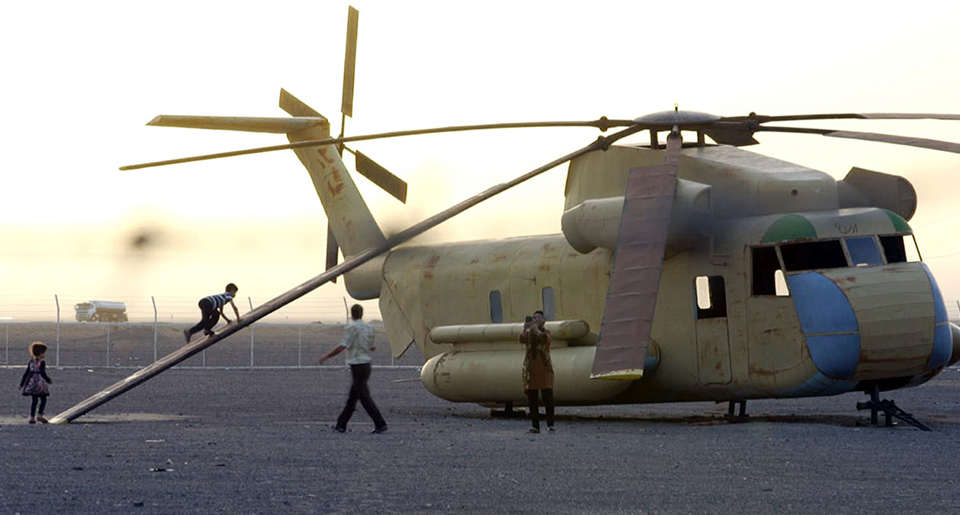
From Harlan to Hormel to Hemingway to Hostages, two-time Academy Award winner Barbara Kopple is one of America’s preeminent documentarians. Her first nonfiction film, 1976’s Harlan County USA, as well as 1990’s American Dream, were class struggle epics about Kentucky coalminers and striking workers at a Hormel factory in Minnesota that both won the Best Documentary Oscar. The insightful, incisive Kopple has also tackled our inner life and was Emmy co-nominated for 2013’s Running from Crazy, exploring mental illness largely through actress Mariel Hemingway, who grappled with her grandfather Ernest’s apparent suicide and her sister Margaux’s self-inflicted death.
Made for the History Channel, Kopple’s latest documentary Desert One chronicles the ill-conceived, ill-fated April 1980 U.S. military mission to attempt to rescue 50-odd hostages being held in the U.S. embassy at Tehran. In doing so in this well-directed 108-minute chronicle that includes news clips, lots of original interviews and some animation by an Iranian artist, Kopple unfolds the clash between America and Iran by showing most, if not all, sides of the story in an extremely fair way. The original interviews include: Yankee hostages and servicemen and their relatives; Pres. Jimmy Carter and Vice Pres. Walter Mondale; as well as Iranian hostage-takers who’d chanted “Death to America” and some Tehran officials. (Kopple said she was not allowed to enter Iran so she hired female interviewers there to do the Q&As.)
Kopple sets the stage by going back in time to the 1953 CIA-backed coup that toppled a democratically elected government and re-installed the Shah of oil-rich Iran, who is depicted as a tyrannical U.S. puppet. The 1979 Revolution fomented by Ayatollah Khomeini, which in turn toppled the Shah and led to the establishment of the Islamic Republic, is detailed through archival footage and interviews with American and Iranian witnesses and participants.
While Pres. Carter ballyhooed a “human rights” foreign policy, he threw oil on the fire by granting the Shah political asylum in America, where he sought medical treatment. He chose not to face justice for his crimes against humanity in his homeland, some of them allegedly carried out right in the U.S. embassy itself, although this goes unmentioned in the doc which does, however, admit that among the embassy staff apprehended by the Revolutionary Guard were indeed some CIA agents. Enraged, Iranian radical students seized the embassy and its staff in November 1979, and demanded the return of the Shah as the precondition for the hostages’ release.
In post-Vietnam USA, Carter emphasized resolving the hostage stalemate via diplomatic means, although a contingency military plan to rescue the embassy staffers was secretly hatched behind the scenes. As the crisis dragged on and the 1980 presidential election loomed, Carter apparently opted for political expediency. With hawkish Republican candidate Ronald Reagan berating Carter for weakness, the rescue mission codenamed “Desert One” was launched.
Kopple documents what happened: a total and complete disaster similar to the CIA’s 1961 Bay of Pigs misfire. You have to see Desert One to believe what occurred in the remote Iranian desert—the colossal intelligence failures, weather mishaps, equipment screw-ups, etc. Hundreds of miles from Tehran, the entire mission was aborted and not a single American was rescued, although eight members of the Marines or Air Force died horrific deaths. The sheer ineptitude and incompetence of the botched mission were staggering, and to paraphrase journalist Jimmy Breslin, the Carter regime and its offense department were truly the imperialists who couldn’t shoot straight.
Kopple lays the whole picture out with multiple points of view, including the mother of one guard who, exasperated at Carter’s inability to resolve the hostage crisis, flew on her own to visit her son at the besieged embassy in Tehran, where she made disparaging comments about the Carter administration at an Iranian news conference. Although Kopple politically leaned left in documentaries such as 2006’s Shut Up and Sing about the repression of the Dixie Chicks for daring to use their First Amendment rights to criticize Bush and the Iraq War, Desert One is not a propaganda picture. If anything, especially at the end, the doc presents strong pro-military viewpoints.
But by also showing the Iranian point of view and providing an in-depth historical viewpoint, the discerning eye can see the big picture. Objectively, all Carter had to do to end the hostage crisis was turn the Shah over to the Iranians to pass judgment on this war criminal. By not doing so, and by stupidly, insensitively permitting the toppled Shah into America, considering the history of U.S. interference in Iran, he inflamed the clash with the Islamic Republic and doomed his own presidency, too. The politicians and military masterminds were too worried about embarrassment and national prestige to dare to do the morally right thing. Carter became a captive of American history.
Although it is beyond the scope of Desert One, the roles of Carter and his egregiously dishonest Secretary of State in Afghanistan set the stage for the rise of Osama bin Laden, Al Qaeda, 9/11 and beyond, by arming the mujahedeen to fight the Soviets. But that’s another story.
The U.S. is still at loggerheads with Iran and entangled in Afghanistan. Washington’s meddling in the Middle East didn’t begin or end with Carter. However, among many things, Desert One reminds us that Carter and his gang of imperialists who couldn’t shoot straight have much to answer for. Their military fiasco was as grossly incompetent as the idiotic imperialist policies that inspired their doomed mission in the first place. In her thorough, fair and balanced documentary, Barbara Kopple vividly brings back to life this all-but-forgotten, misbegotten chapter in history we’re still paying for. Desert One aired Nov. 18 on the History Channel, the same day Kopple presented it in person at the Chinese 5 Theater as part of this year’s American Film Institute film festival.
For a briefer and somewhat different approach toward this film, see another PW reviewer’s comments.












Comments